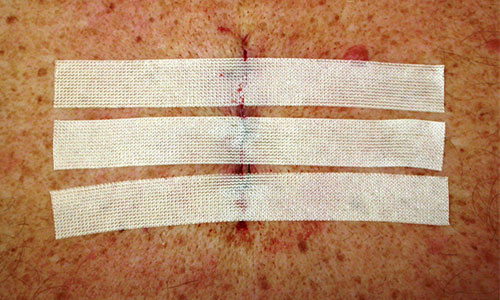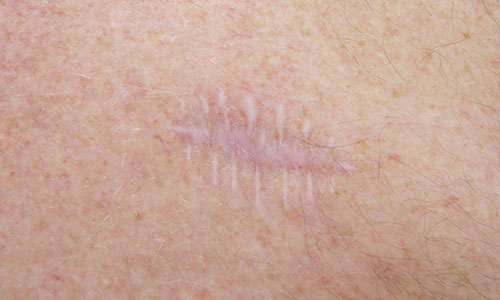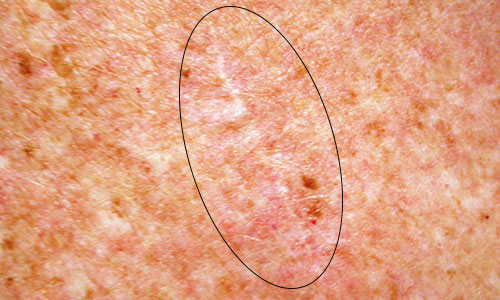Can You Fix a Scar by Cutting It Again and Stitching It Up
How to reduce the appearance of surgical scars
When people undergo surgical removal of skin cancer, they're often concerned about the scarring that may be left behind.
While common sense tells us that it's certainly much better to have a scar than a malignant spot, we also understand that unsightly scarring can have a real and significant impact on a person's self-confidence.
The following methods, used individually or in combination, are proven to help hasten the healing of surgical wounds and greatly improve their cosmetic outcome.
Use adhering tape across your wound for 3-6 months after surgery
Until 2012, there had been no research to prove that reducing wound tension by taping scars helps with healing and cosmetic outcome, so my team and I decided to undertake a study ourselves. We were especially interested in improving the cosmetic outcomes of surgical scars on the back, chest or near joints (such as the knee or elbow), as wounds in these areas generally heal poorly due to excessive tension on the immature healing scar as the person bends and stretches.
We found that taping torso wounds for the first 12 weeks after skin surgery significantly improved the appearance of the scars at the 6 month end point of our study. These tapes were placed perpendicularly across the wound and worn around the clock to prevent stretching of the scar as the person bent and stretched. For scars elsewhere such as on the face, abdomen, arms or legs (not close to the knee or elbow) where there is no excess tension with movement studies show that simply covering the wound along its entire length with tape for several months locks in light moisture as the scar matures, greatly improving the ultimate cosmetic outcome.
Read the full study here.

Use strong, deep, absorbable stitches
Referred to by doctors as 'deep dermal sutures', these hidden deeper stitches help prevent your healing wound from stretching as you go about your normal day-to-day activities. It is worthwhile asking your treating doctor if they will be using these hidden deeper stitches, which slowly dissolve over many months thereby increasing the strength of your wound when it is most vulnerable to stretch.
Use a hidden stitch on the surface of the skin
Doctors call this stitch a 'subcuticular suture' and use it to hold the edges of the wound together instead of interrupted individual stitches. A hidden stitch is generally preferable to individual visible stitches on body areas where the skin stretches a lot with normal movements (back, chest and near joints) because the stitch marks themselves as well as the scar can spread and stretch during the slow healing process.


Eat a healthy balanced diet with plenty of protein
A protein rich diet – including meat, fish, eggs, pulses or tofu – will help improve and speed-up healthy wound healing. If you are prone to slower wound healing or know that your diet is deficient in nutrients, it can also be helpful to add daily vitamin C and zinc supplements in the weeks prior to and following skin surgery.
Let your doctor know if you're prone to raised scars (also called keloid scars)
Your doctor will assess your risks based on the the part of your body needing surgery and may prescribe preventative treatment (such as silicon gel or sheet dressings) once the sutures are removed. Even though successful treatment exists for keloid scars, preventing them in the first place will lead to a far better cosmetic outcome
Source: https://www.skinrepair.net.au/how-to-reduce-the-appearance-of-surgical-scars/

0 Response to "Can You Fix a Scar by Cutting It Again and Stitching It Up"
Post a Comment